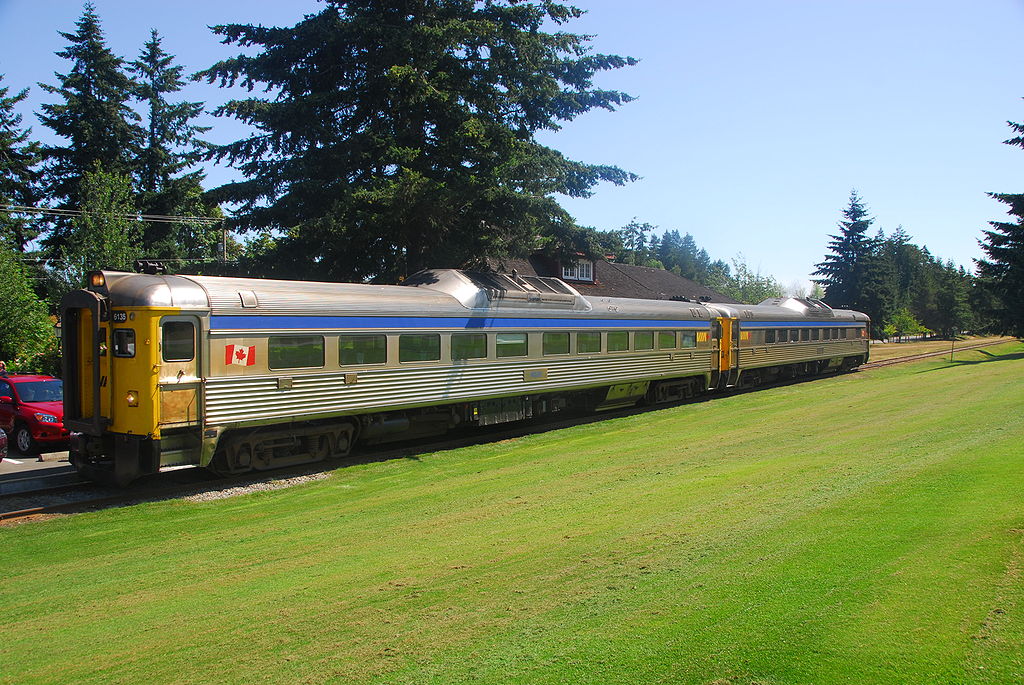Imagine what you could do with a green corridor running 225 kilometres from Victoria to Courtenay and 64 kilometres across Vancouver Island from coast to coast — land already held in trust for the public.
World-class cycling and hiking trails. Land for parks, commuter corridors in urban areas, housing, community gardens or to settle First Nations treaty claims. The possibilities for the old E&N rail line and the $276 million worth of land around it are amazing.
And that potential is largely lost under the direction of the Island Corridor Foundation (ICF), to the growing frustration of municipalities on Vancouver Island.
The foundation is supposed to manage the rail line, surrounding land and other assets — together worth about $337 million — in the public interest. It has been working, unsuccessfully, on restoring passenger rail service shut down in 2011 because the poorly maintained track was too dangerous to use.
The Island Corridor Foundation is an odd creature. It was set up as a charity in 2003 with the goal of taking over the rail lines on Vancouver Island owned by Canadian Pacific. In 2006, CP handed over the land and got credit for a $236-million charitable donation to the foundation and tax savings worth about $38 million.
And the foundation, directed by a 12-person board — five representatives from regional districts along the line, five from First Nations and two directors at large — started to figure out how to save a dying railway business. They had no experience, no effective accountability and faced huge challenges.
Rail fans are devoted, and they cheered on promises to improve the E&N passenger service, which ran, or limped, through a return trip between Victoria and Courtenay each day, supported by about $1.4 million a year in subsidies from Via Rail. The Dayliner trip, thanks to the poor track condition, took 4.5 hours, about 90 minutes longer than driving.
The foundation set out to find $34 million to repair the neglected rail lines and bridges, protect passenger service and revive a failing freight business.
It didn’t work. The passenger service was briefly suspended in 2007 over safety concerns, then stopped in 2011 because the line was just too run down to operate safely. The foundation first said the closure was temporary, then said the problems were bigger.
Various big plans were floated, like a commuter rail trial between Victoria and its western suburbs, but nothing happened. The foundation, with support from local politicians, said it needed $15 million for repairs from the provincial and federal governments, then another $3.2 million from Island municipal governments. Then the trains could run again. It promised, repeatedly and inaccurately that the trains would soon be running again.
Both senior governments eventually said yes, but with a great many conditions. And they still haven’t advanced the money.
Partly, they fear the ICF’s assessment of the cost of repairing the track is wildly understated. A provincial study put the cost at a minimum of $70 million.
The federal government is also concerned about a lawsuit from the Snaw-Naw-As First Nation seeking the return of territory expropriated when coal baron Robert Dunsmuir received land in return for building the railway in the 1880s.
And the Regional District of Nanaimo, which committed $945,000 to track repairs in 2012, has pulled the money, citing a lack of confidence in the foundation’s leadership.
It is hard to avoid the conclusion that governments at all levels lack confidence in the foundation on a fundamental level.
The ICF started with a lot of goodwill. People like the idea of rail travel, and the historical connections. (Even though few people actually rode the E&N, which was attracting about 180 riders a day.) Capital region municipalities hoped for a solution to daily gridlock.
But that’s largely been lost.
The Association of Vancouver Island and Coastal Communities commissioned a report on the ICF. Consultant Kelly Daniels interviewed municipal, provincial and foundation officials and found widespread dissatisfaction. The ICF board was seen as secretive and unaccountable, and many of those interviewed said they had lost their trust in directors.
It’s hard to argue with that perception. The foundation’s board meetings and annual general meetings have been closed to the public. It didn’t publish audited financial reports for the first eight years of its existence. There is no publicly available business plan to support the claim that about $20 million in repairs will be enough to support a viable service. And the foundation’s promises and forecasts have been consistently wrong.
The consultant’s report also found that the foundation’s CEO, former BC Liberal cabinet minister Graham Bruce, has become a symbol of the problems.
“Whether it is his salary, the perceived lack of performance in achieving a train service on Vancouver Island, the fact he was found to have been in violation of the federal lobbying code of conduct, or the perception of his controlling and non-transparent approach to management, in their minds, he is a major source of the discontent and loss of credibility with the ICF,” according to the consultant’s report.
None of which is surprising. Bruce’s salary as CEO, for example, is secret, which violates at least of the spirit of Revenue Canada requirements that charities disclose their highest top salaries. Management and administration costs — apparently all provided under contract by his company — were $186,000 last year. And Bruce was found guilty of violating federal lobbying rules by failing to register as a lobbyist for the Cowichan First Nations.
“Early poor communication and unfulfilled promises have resulted in a significant loss of trust and confidence in the CEO that also reflects badly on the ICF board,” the report says. “The damage to their reputation will be a significant hurdle to overcome in their efforts to gain back political support at the local level.”
It’s unfair to blame Bruce. The board remains responsible for the foundation’s activities — and for the decision in May to extend his contract until 2019 despite the concerns among stakeholders.
There are easy enough solutions. In 2012, the provincial auditor general reviewed three economic development trusts created by the provincial government, and given millions to promote development. They all publish three-year plans with measurable objectives. Annual reports outline success, or failure, in meeting the targets.
The Island Corridor Foundation does not come close to providing that kind of information.
And, its initial response to the consultant’s report and municipal unrest was polite but unenthusiastic. The foundation said it would review the report and “seriously consider” its recommendations, adding some were already under way. But it promised no action and said directors had “complete confidence” in Bruce.
All of which raises two areas of concern.
The first is the future of the valuable land, both financially and in terms of its potential to improve life for Islanders, under the foundation’s control. The ICF has done some work on trails and train station renovations. But it clings to an increasingly hopeless dream of restored passenger rail service with no business plan or alternate vision for the assets if rail proves doomed.
And second, how did this go so wrong? The idea of public control of these assets, with a mandate to deliver shared benefits, is compelling. It’s a vision others likely share. We need to learn from the Island Corridor Foundation’s struggles and come up with better models for community control of public assets. ![]()
Read more: Transportation, BC Politics
















Tyee Commenting Guidelines
Comments that violate guidelines risk being deleted, and violations may result in a temporary or permanent user ban. Maintain the spirit of good conversation to stay in the discussion.
*Please note The Tyee is not a forum for spreading misinformation about COVID-19, denying its existence or minimizing its risk to public health.
Do:
Do not: